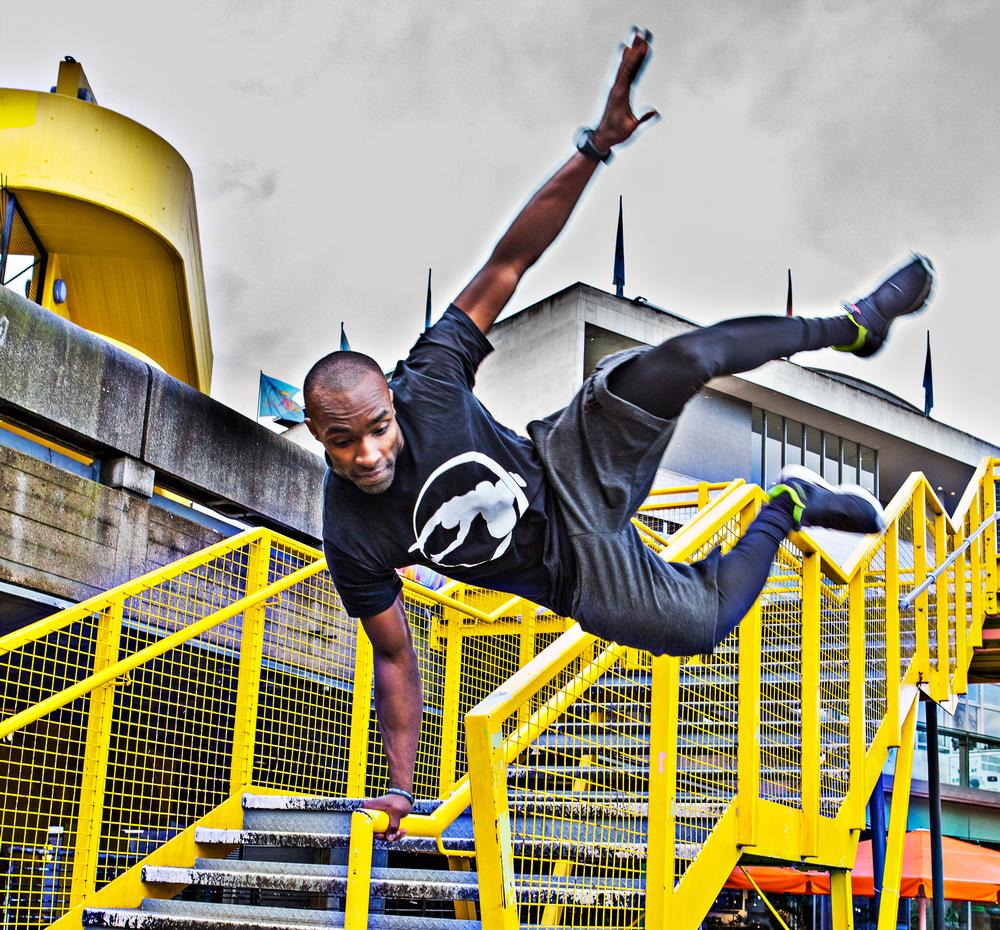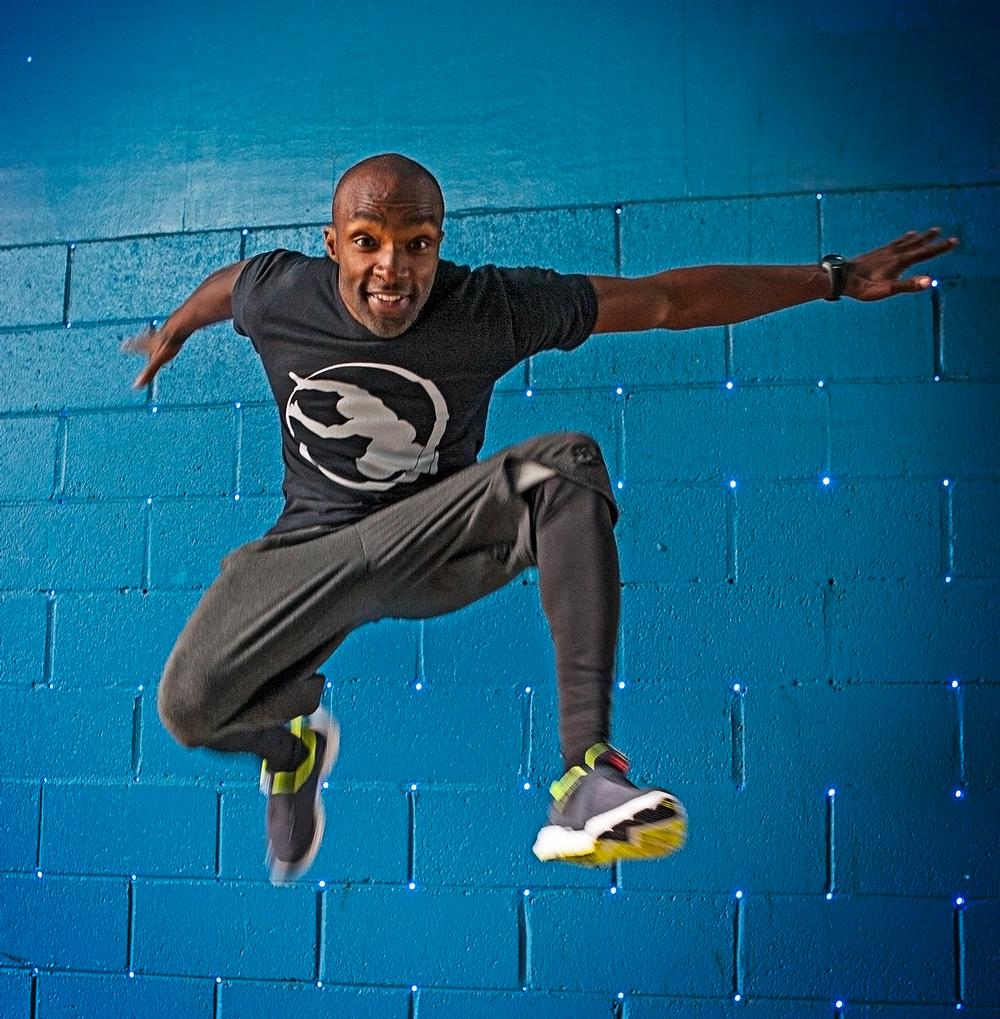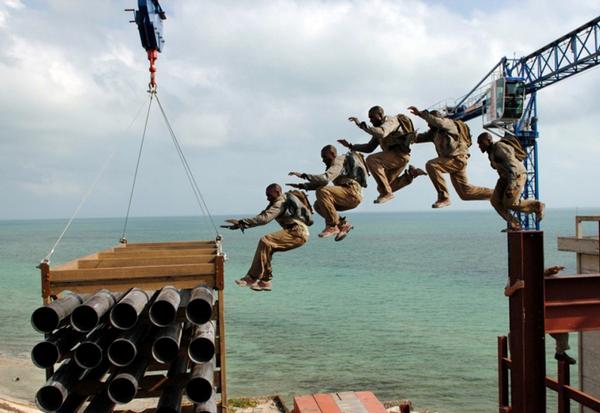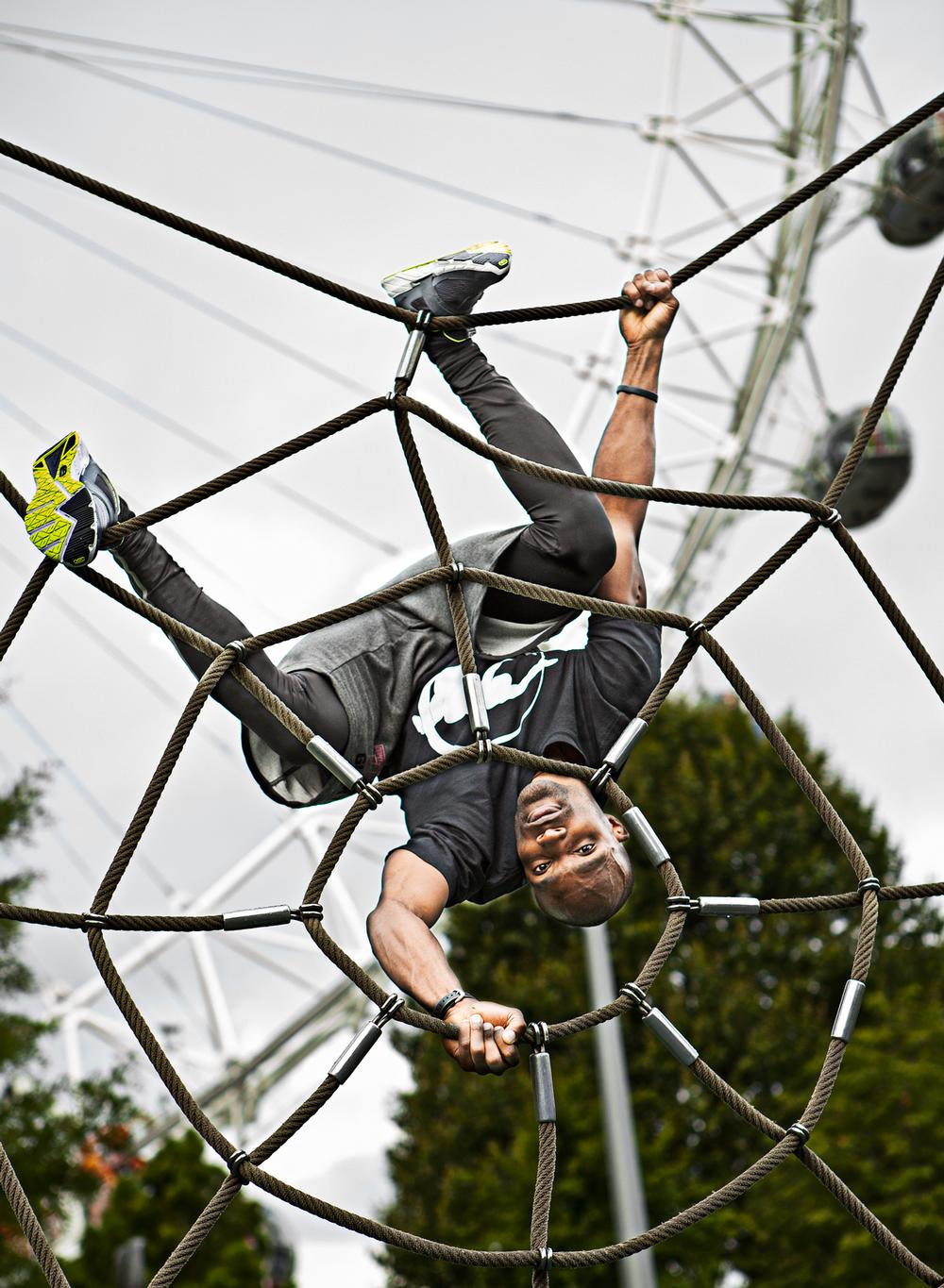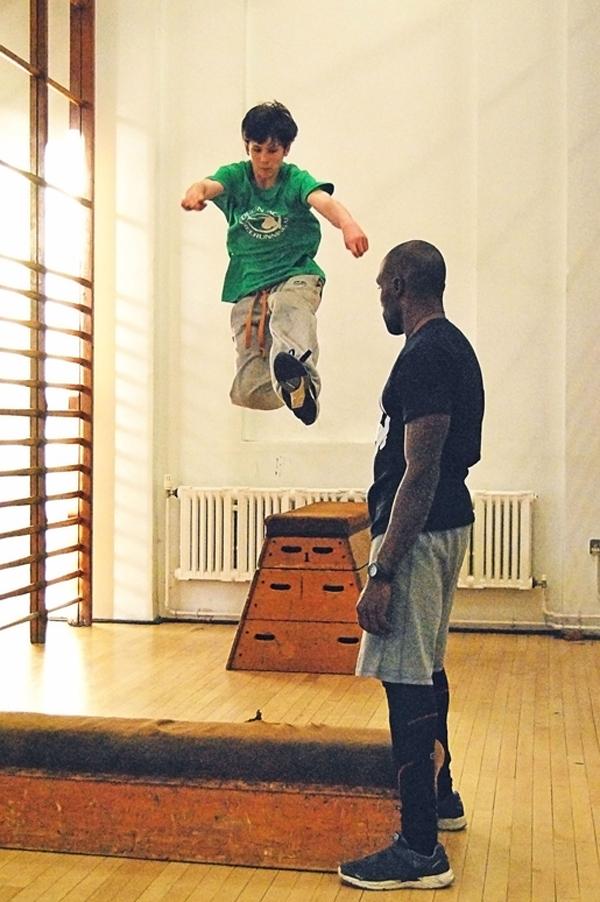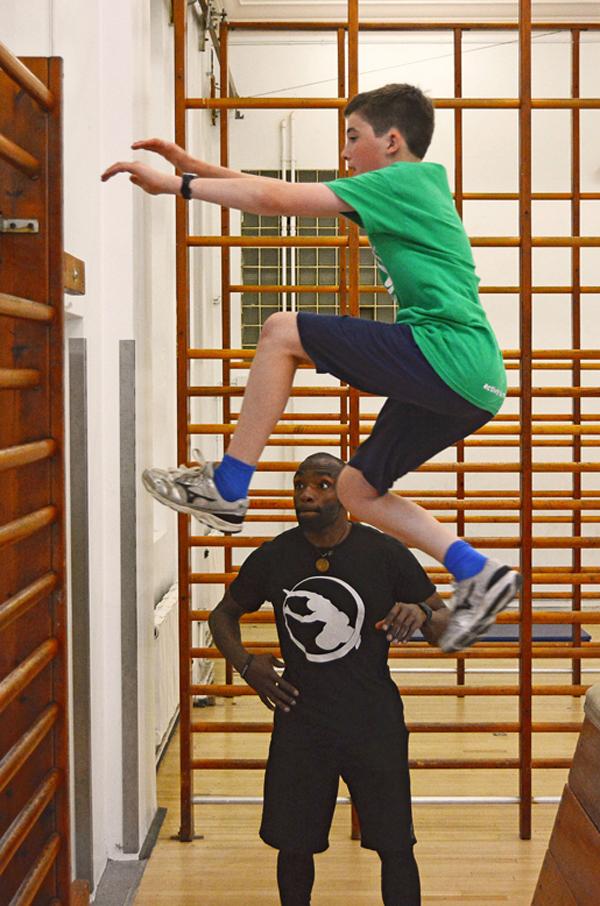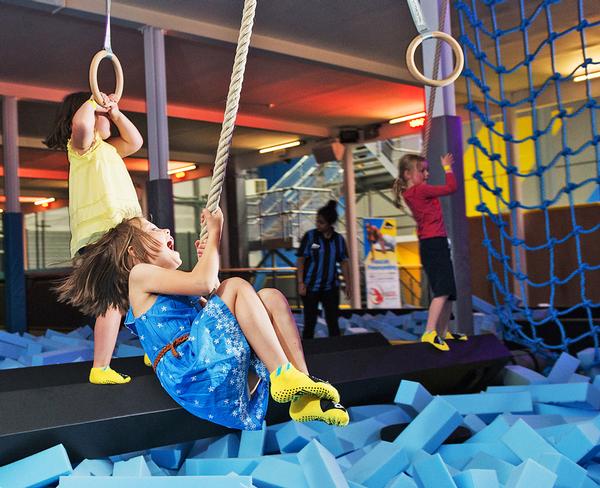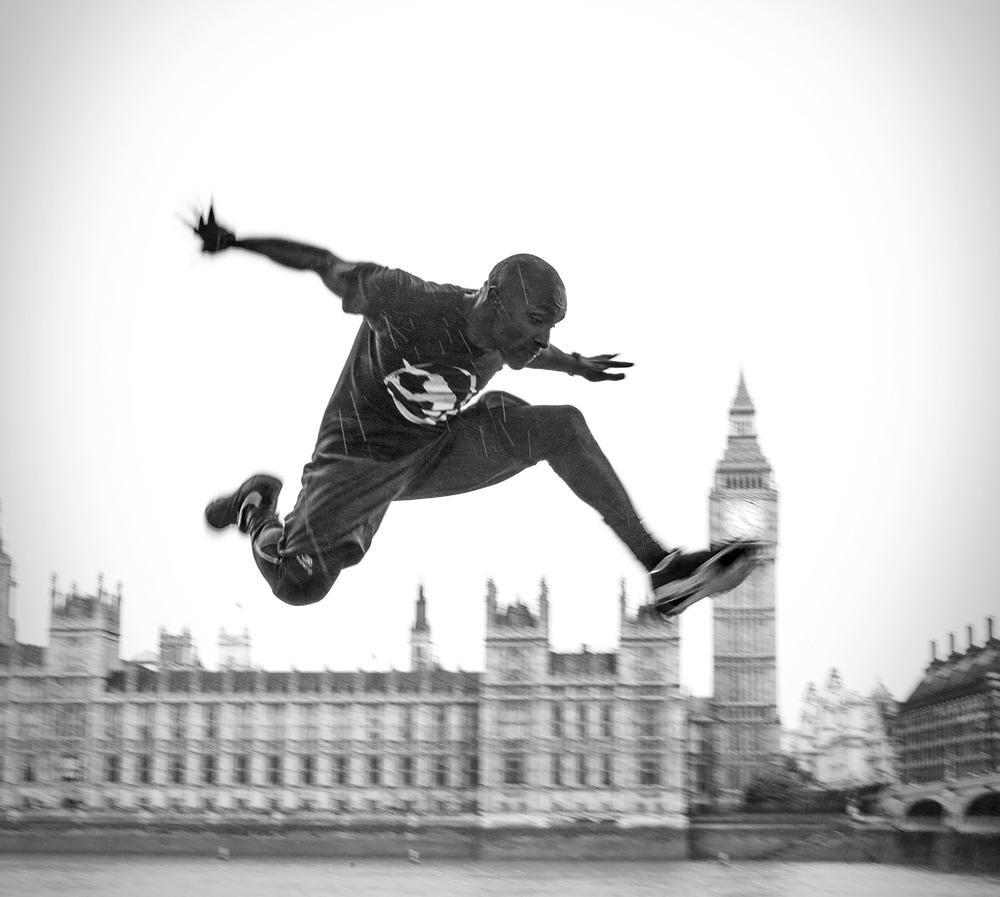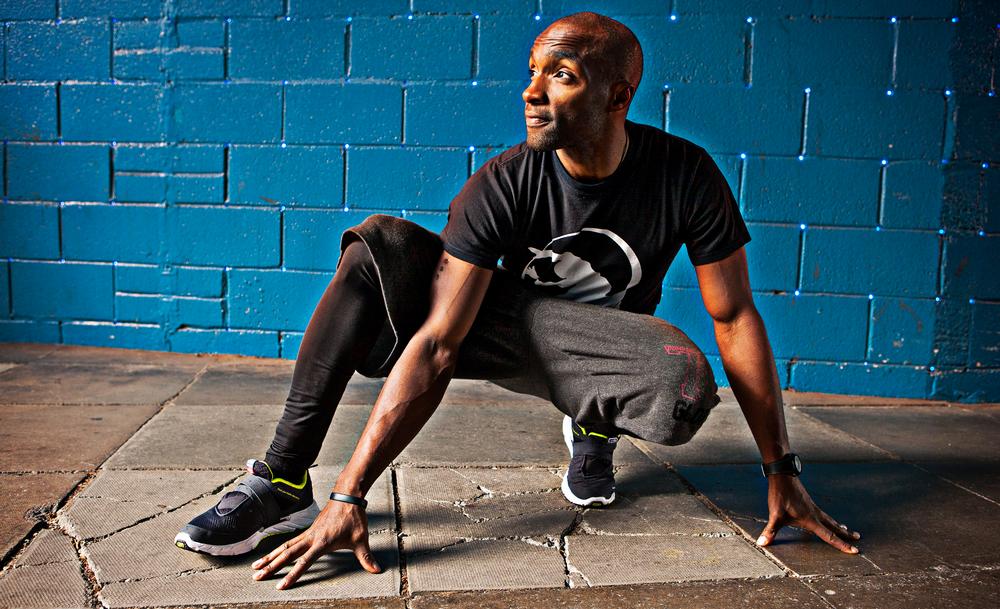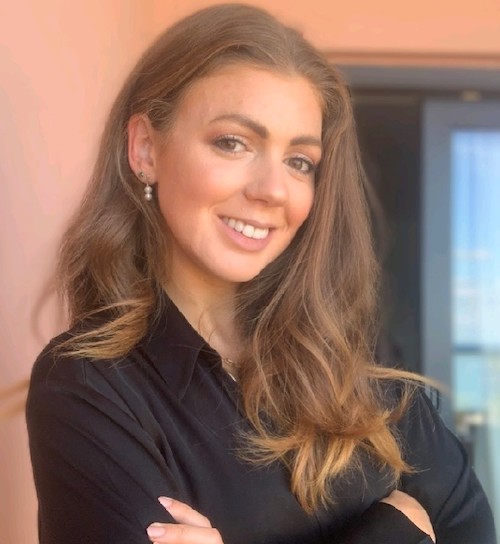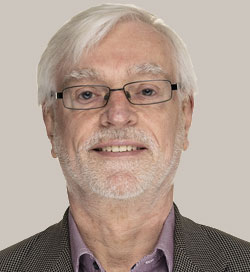James Bond fans will recognise renowned freerunner Sébastien Foucan as the baddie Mollaka from the opening scenes of the 2006 film Casino Royale. Madonna fans might have spotted him defying gravity in the video for her 2005 single Jump; he then toured the world with her on her Confessions tour.
Yet in spite of these impressive CV entries, Foucan remains remarkably down to earth – much more interested in exploring the potential of his art form and passing his passion on to others than he is in superstardom or marking his territory.
“I’m a pioneer, but I don’t try to own anything,” Foucan explains. “Jumping, running, climbing, swinging… it was all here long before I was born. People will take freerunning and do it their own way, and I’m OK with that.
“But for me, what I do is a lifestyle – something I do every single day – and it’s a constant work in progress. I think that’s what happens when you create something new.”
He continues: “I moved away from parkour, which I originally founded with my friends in Paris, when I started to feel limitations being imposed on my practice. People had started to say ‘It has to be like this, you shouldn’t do this, you can’t use this, you can’t do that’, and I found it very restrictive. I’m very into martial arts and philosophy, so I’ve always been driven by creativity and by being open.
“Me personally, I have absolutely no boundaries. Activities are activities. We give names to sports – tennis, for example – but if you put a racket in a kid’s hand and they don’t know the right technique, they’ll just move in whatever way feels natural to them and they’ll have fun. That’s what I focus on. Activity any time, anywhere – just move your body and have fun.
“My style therefore began to evolve into what I eventually named freerunning, which is about expressing yourself in your environment without limitation.
“If I had to explain the difference between parkour and freerunning, parkour is efficiency – it’s getting past obstacles to get from A to B – whereas freerunning is more about flips and tricks and creativity.
“But actually the difference is more than that. It’s a shift from physicality to musicality.”
The Foucan philosophy
In fact, the longer you listen to Foucan speak, the clearer it is that freerunning for him is as much a philosophy of movement as it is a physical act of bouncing off walls and jumping between obstacles.
“For me it’s a connection, not just with nature but with the universe. It’s being totally in tune with your body and your surroundings,” he says. “The aim of freerunning has nothing to do with being able to jump high. The aim of freerunning is wellbeing, which for me is everything you do that doesn’t damage yourself. It’s important not to go against your own internal music.”
He continues: “In freerunning, we don’t have a season like a traditional sport might have: there are no competitions, no league tables, no trophies. Instead we follow nature. We adapt to our circadian rhythms, understanding our bodies and creating our own lifestyles based around those natural rhythms.
“In my calendar we have spring awakening, expressive summer, smooth autumn and winter sanctuary. Winter is meant to be more relaxing. Autumn can be things like ice skating – swinging, gliding, less impact on your joints so you can recover. In the spring you start to get more dynamic. That’s my concept.
“People come in and want to do the jumps straight away, but as a coach I try to share my bigger concept with them. They need to go through the whole year’s journey to progress with freerunning, as well as progressing in their own mindset towards a stage where they can just let their body and mind go.
“The connection between your mind and body is really important. I call it ‘horse-mindship’. The horse is your body, and the mind is obviously the mental side of things – and often in freerunning there’s a disconnect between the two. You see it a lot when someone’s getting ready to do a jump. It’s that fight inside: ‘I want to do this jump, but I can’t do it’.
“Even me, when I was doing James Bond – I was scared. I only had one tiny wire supporting me and my mind couldn’t accept that was enough. But you focus and you learn to believe you can do it. That’s where I think freerunning has been influenced by martial arts – in that sense of inner focus and concentration and self-belief.
“In my approach to teaching, if it doesn’t happen today, that’s OK – you just keep coming back to it and sooner or later your mind and body will just let go. I believe I have the tools to help someone overcome their fears, whatever those fears might be.”
He continues: “I see a clear difference between traditional sports and lifestyle activities, and that’s shaped everything I do. I want my practice to become very educational, with less of what I call lying. You might get an injury playing a sport, but people lie to themselves and to their bodies – they push themselves when they shouldn’t, just to win a trophy.
“In my practice – in my lifestyle – there’s no such a thing. If I were in pain, I’d stop. You need to work in harmony with your body. I deeply believe we can live to 140 years old, but not if you get trapped in the cycle of competitive sport: the cycle of injury, recovery, injury, recovery, winning, losing, winning, losing. That destroys your body, as well as your internal armoury.
“That’s my philosophy, and that’s what I want to bring into my academy. In fact, I’d like an area like a martial arts dojo with my philosophy clearly up there on the wall. It isn’t quite like that yet, but it’s what I’m working towards.”
Spreading the word
And he’ll have plenty of opportunity to evolve his academy concept, having joined up with Oxygen Freejumping founders David Stalker and Fred Turok to launch a Foucan Freerunning Academy in every Oxygen trampoline park. The first Oxygen Freejumping site opened in West Acton, London, this summer, with plans to open another six over the next 12 months. A further 15 are already in the planning pipeline. “I’m really excited about it, because they just get it. David [Stalker] shares my vision and my passion for activity,” enthuses Foucan, who has now made Oxygen West Acton his indoor base.
But does it not matter that the activity takes place indoors at these venues – isn’t the whole point of freerunning that it takes place outside?
“No, no. Freerunning is everywhere: outside, inside, absolutely everywhere. The world is the playground.
“I could work with anyone, anywhere, as long as they have the vision. It’s important to design the room with freerunning in mind, though, so participants of all levels can find a creative route through it.
“At Oxygen, I’m inside for safety purposes and for convenience – especially with children, because I have to be responsible for them. But in my daydreams, I’d have somewhere with a little tunnel where the kids could crawl back and forth between an indoor and an outdoor area. I think they’d love that.”
The main challenge will be how to spread himself across numerous locations. “I’ll have to teach the coaches myself, and in fact some of the adults who I’ve been teaching for a while now have put themselves forward.
“But I have to deliver the quality. I have to define the standards of the Sébastien way, and I’ve thought a lot about it. I now have a clear idea of what I want, how it’s supposed to be, what I don’t want to see. So it’s coming.
“We may make a few mistakes along the way, but I’m not afraid of the challenge. I want my legacy to be creating the place I would have loved to have had when I was a kid. The sort of place that will make the word spread like wildfire.”
Calling all visionaries
Given the way Foucan embraces freerunning as a lifestyle, does he ever just walk normally down the street?
“I do walk normally, but inside my head it’s constant. You look around and you see things differently. It affects you in your lifestyle forever, because you notice when people are putting up boundaries. You notice parents saying to their kids: ‘Don’t do this, don’t climb, don’t jump… don’t, don’t, don’t.’
“Society does that too. I run a class at Latimer Road in London, and every sign there says ‘No freerunning’. No freerunning, no skateboarding – and the worst sign I’ve ever seen: ‘No jumping of any kind.’
“That’s awful, because there’s a huge call for what we do, not only from kids but from adults too – and that’s because people want freedom. They want escapism. They want an activity that’s fun and social and that isn’t going to feel like a chore after work.
“So if you come to one of my freerunning classes, we won’t be training. I don’t do sit-ups. I don’t do pull-ups or push-ups. I hate running – sorry to those people who like it, but it’s boring. “We’re doing something new, and it’s about fun and play and freedom. I believe every park in the country should be full of playgrounds. You have all this space and you should be using it to inspire people to be active.
“I know there are health and safety considerations, but in the end, in life, 100 per cent safe doesn’t exist. We do our best in our academies, but activity is vitality. People have to be active.
“So where are the visionaries? I can go to any gym, any place. All I need are people who are visionaries.”








